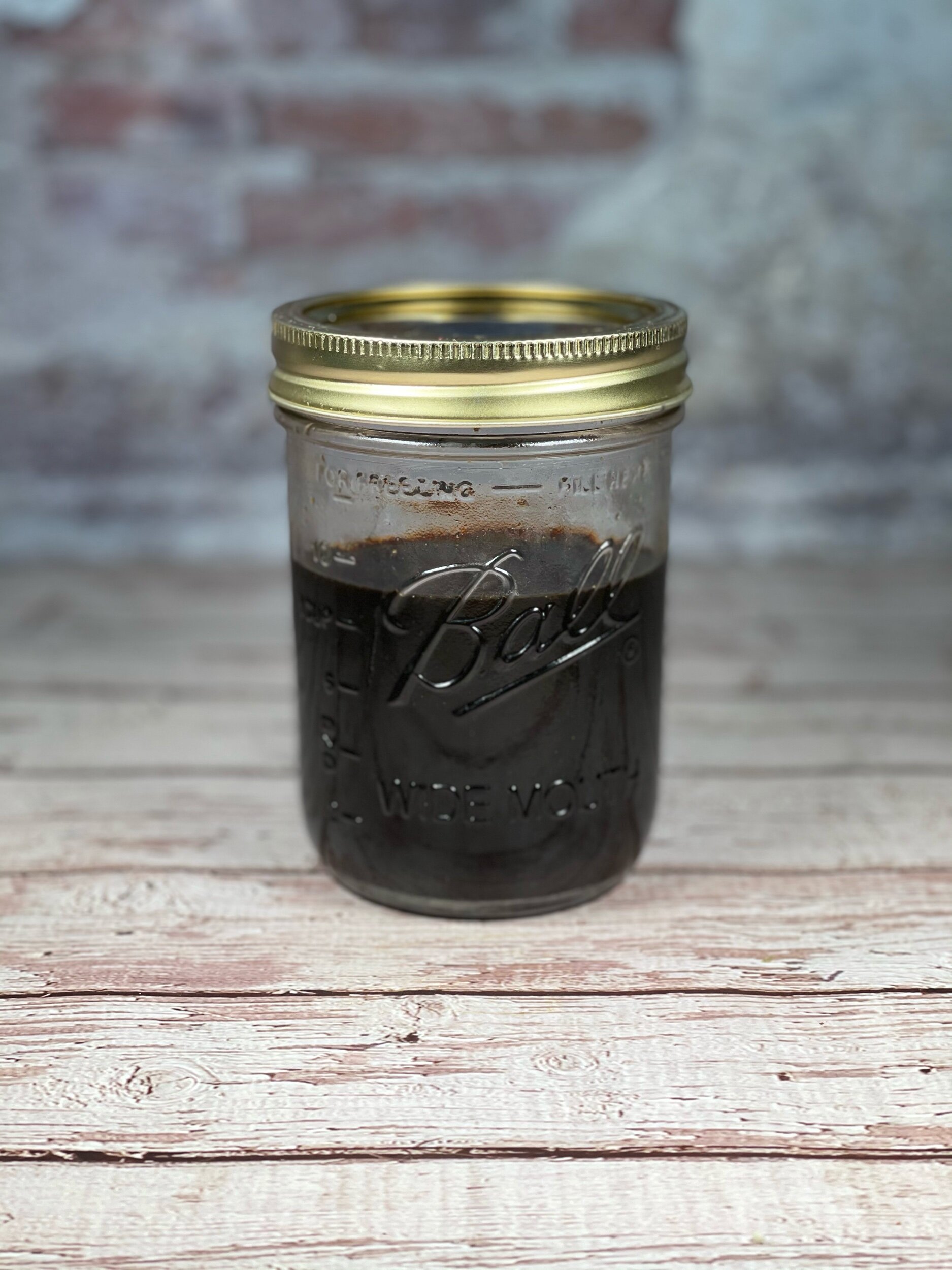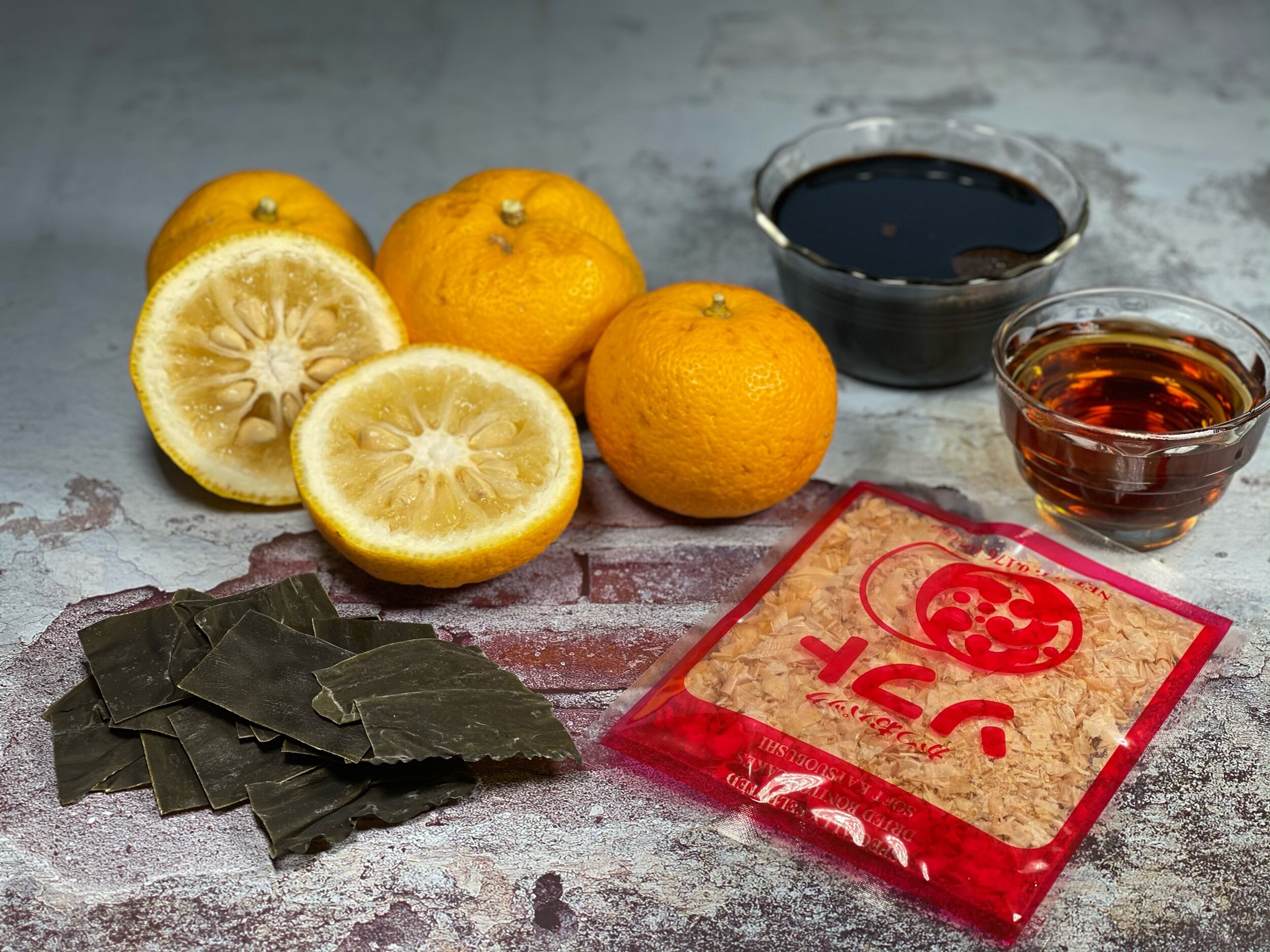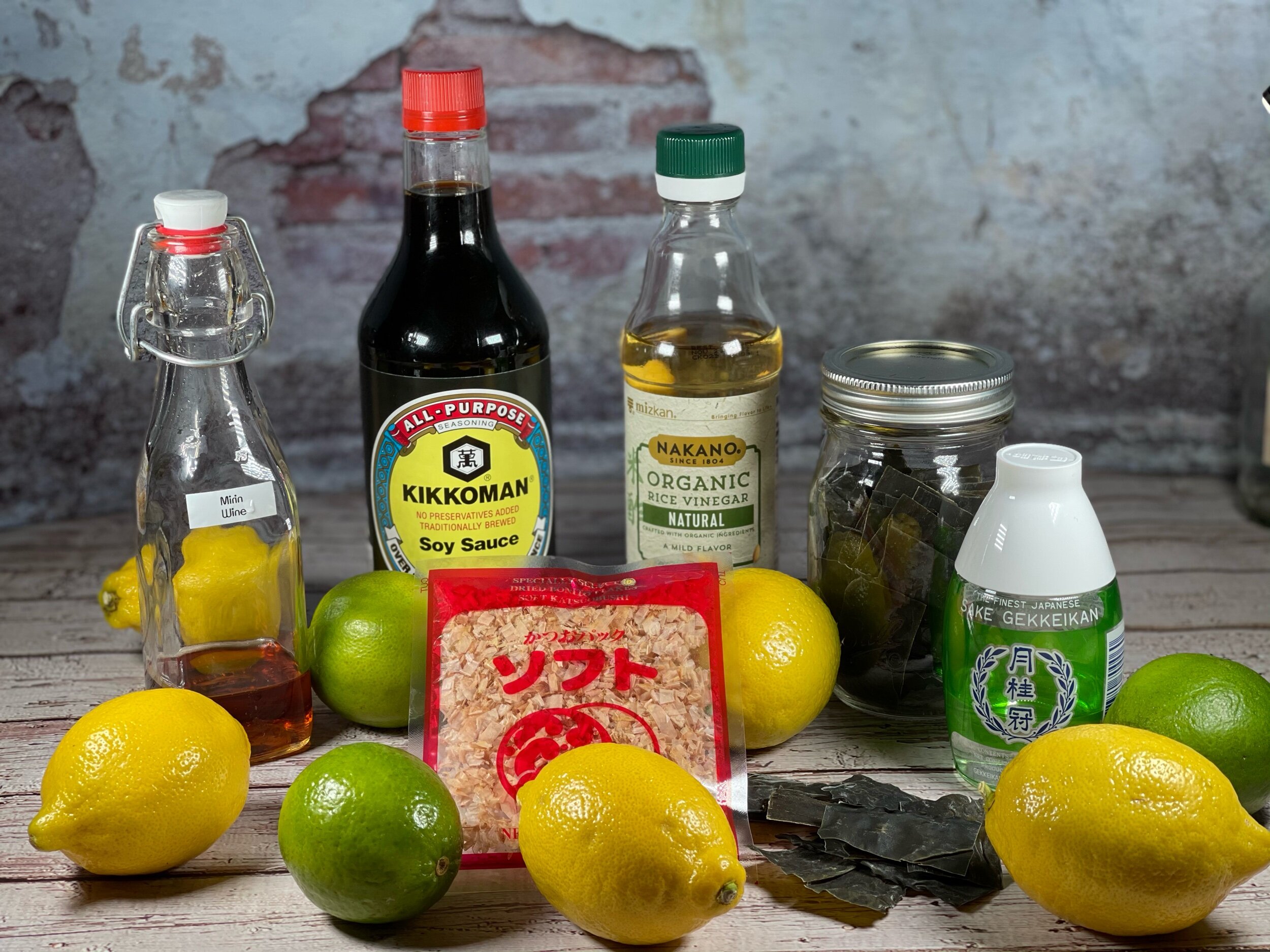Ponzu Shoyu
One afternoon I went down a rabbit hole when reading about something that at this point, I can’t recall, and ended up on the website Fruitstand.com which has many unique and harder to find fruits that you can order and have shipped to you within days of harvesting. The sight is unique in that what is available for purchase changes according to what is being harvested. What brought me there was Caviar Limes which I swiftly purchased and will be featured in my next recipe, but I also spied that Yuzu was about to be harvested. It immediately piqued my interest as I had first heard of it a few years ago whilst watching the Great British Bake Off and two contestants from series 8, Kate and Sophie, had used it in their bakes. After that, I had seen it from time to time on various cooking shows or from interviews with chefs when they referred to it as their “secret ingredient”. Now, I am about to get a bit long winded, so you are forewarned that you can jump to the recipe if you wish.
Fresh Yuzu
What is Yuzu?
Yuzu is a citrus fruit that was cultivated in Asia until recently where small crops can be found in several countries, including the US. When I looked up how to describe what an Yuzo smells and tastes like, I came across so many different answers that make it very hard to pin down. To me, it smells definitively like a nondescript citrus fruit, but it is also a strong floral scent. Many say that it tastes like a cross between a lemon and a lime, but that doesn’t do it justice. It is incredibly tart, more so than a lime but it also has a bitterness, although pleasantly so. It also has tones of grapefruit and bitter orange. It grows wildly in China and it is believed that it is a result of hybrid of a mandarin orange and an ichang papeda. It was introduced to Japan, its current primary grower, during the Tang Dynasty. Ok, if you put on your history hat, the Tang Empire ruled from year 618 through 907, so it is no wonder the fruits origins are a bit muddled.
So I was wicked excited and ordered a sample pack which they said would be anywhere from 4-6 pieces of fruit. Now, full disclosure, I should have done a touch more research on the actual fruit as then I would have known that the fruit produces very little juice and I would have purchased more. The consequence of my actions was that I needed to choose only one of the many recipes I had wanted to try. I chose not only the one I was most excited to make, but one that I actually had tasted before, Ponzu Shoya. Why was I excited? Well up until recently, finding fresh Yuzu was difficult, so many homemade Ponzu Shoya recipes used a lemon/lime combo as a substitute. It is indeed a good substitute, but there are noticeable differences.
What is Ponzu and Ponzu Shoya?
This is where verbiage can be a little misleading. Typically, “ponzu” is used interchangeably with “ponzu shoya”, except that isn’t fully accurate. Ponzu is a citrus-based sauce that is made from citrus juice (yuzu, sudachi, lemon, daidai or kobuso) combined with dashi, rice vinegar and mirin. “Ponzu Shoya” is ponzu, usually with yuzu or sudachi, combined with soy sauce and it is what you most likely see on menus as well as bottled in the grocery store here in the US. Ponzu Shoya can be used as a marinade as well as a dipping sauce. What makes it so great is that it embodies the five major taste profiles. You get the salty from the soy sauce; sweet from the mirin and/or sake; sour from the both the bright yuzu as well as the rice vinegar; bitter from the yuzu and finally the incredibly complex umami that is from the soy sauce and taken to a new level with the kombu (seaweed) and the katsuobushi (fish flakes).
What is Umami?
Umami is one of the five basic tastes. I remember doing a science project in elementary school on taste receptors. We used a “tongue map” to see if we could identify the 4 tastes of bitter, sour, salty and sweet. That science experiment left me really confused because for one, to me, it didn’t encompass all that flavor could be and most importantly for the experiment, most subjects could taste the flavors regardless of where they were put on the tongue. Now, many decades later, I realize why! The “tongue map” of tastes is a complete myth! While it’s taught in schools (or was as I really hope it is not being taught in 2021) it was disproved by actual scientists and not my science project, as we can taste all the basic tastes regardless of where they are on the tongue. It really makes you think because it was proven false in 1974, before I was born…..but I digress.
The other discovery I made since then was the presence of a 5th taste, Umami. Now I am not sure why we only began hearing about Umami until the last decade or so, despite its discovery in the early 20th century and its recognition in 1985 as a scientific term, but here we are! Umami describes the “savoriness” or “meatiness” in flavor. From the scientific end, the taste receptors are responding to glutamates and nucleotides. Alright, enough science talk. Just know that the “deliciousness” of savory foods is at the hand of Umami. It is present in meats, fermented products, mushrooms, fish, shell fish and vegetables to name a few. Most importantly it is present, is a big way, in Ponzu Shoyu!
How do I use Ponzu Shoyu?
It can be used on anything! It of course pairs well with Japanese flavors and dishes, but it can be used beyond that. Use it as a marinade for fish, poultry or beef, or use it as a dipping sauce for any of them and roasted vegetables. You can use it as a base as well and add things such as ginger and scallions. What ever you decide to pair with it, you’re sure to be delighted with the complex and satisfying flavors of the Ponzu Shoyu.
Recipe Card
Note: I highly suggest having a digital scale in your kitchen. It takes the guesswork out and makes baking recipes a lot more successful. All of my recipes are written in metric weights. If you do not have a scale and need to convert a recipe or ingredient to volume, you can use the buttons to the right and copy /paste the recipe into the handy recipe conversion tool or the single ingredient conversion.

Ponzu Shoyu
Ingredients
Method
- Sterilize a mason jar and its lid.
- Add the soy sauce, sake and mirin to a sauce pan and bring to a boil and immediately bring it down to a rapid simmer. Simmer for 2 minutes and remove from heat.
- Add the rice vinegar to the hot soy sauce mixture and stir to combine.
- Pour mixture into a mason jar and add the rest of the ingredients (yuzu juice, kombu, katsuobushi and zest if using).
- Place and tighten the lid and shake the jar for 10 seconds to get everything well combined.
- Let the sauce sit over night but no longer than 24 hours. Pour the sauce through a sieve to remove the solids and pour the liquid back into the jar.
- It's ready to enjoy!
- There are many different instructions on the shelf life of a homemade ponzu. However, popping it in the fridge is your best bet for up to 6 months.
* Notes (if you see an * please check here):
- If you can not find fresh yuzu or bottled yuzu juice, you can substitute with 1/2 lemon juice and 1/2 lime juice. The same goes for the zest.





